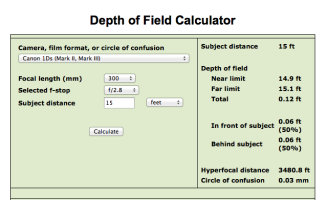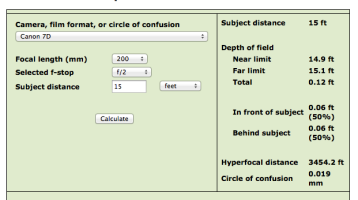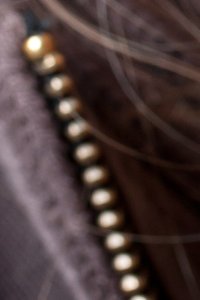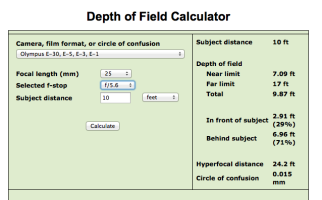Pi said:
privatebydesign said:
Now you could argue that I could replicate my 4/3 shot with the ff camera at f11 and iso 1600,
Consider that I said it.

and you'd be correct, but the 4/3 is going to cost much less, be much smaller and lighter etc etc. That is why it was sound advice for him to get a 4/3 camera.
I did say that it was probably a good advice. But the fact remains: smaller formats
do not allow you to get deeper DOF.
As I wrote in my first post in this thread, the second post on page one, depending on how you make your comparison a crop sensor can be shown to demonstrate more, the same, or even less dof than a ff sensor.
The truth is, two photographers standing next to each other, one crop sensor, the other ff sensor, with exactly the same camera settings and the same framed image (meaning the crop owner has a wider lens), if they both take an image then the crop sensor image has more dof. You can argue the semantics and explain it is the lens that is making the difference, and that is fine (we have done a lot of that in this thread), but in practical terms to many actual photographers the difference is most readily associated with sensor size.
Or, 'If I take this framed image from a set point with these settings how much dof do I get with this sensor/lens combination?' that is a question many photographers would ask and the smaller sensor/wider lens combo will realise more dof.
Technically a smaller sensor displays narrower dof, after all for a standardised output the CoC must be smaller as it needs more enlargement, however, for same framed images the difference in focal length and apparent aperture far over power the CoC differences.
Or, consider the corollary of your statement
"But the fact remains: smaller formats do not allow you to get deeper DOF.", that would be, larger formats do not allow you to shoot narrower dof. Show me a narrow dof image from a P&S, or a phone, you are just arguing semantic points, not embracing the way we actually understand and use the equipment available to us. Sure if somebody made a sub f1 P&S we "could" take a narrow dof image, but they don't. Similarly you can't shoot an image that replicates a 200 f2 on a ff body with a single shot from a crop camera (but you can the other way around).






